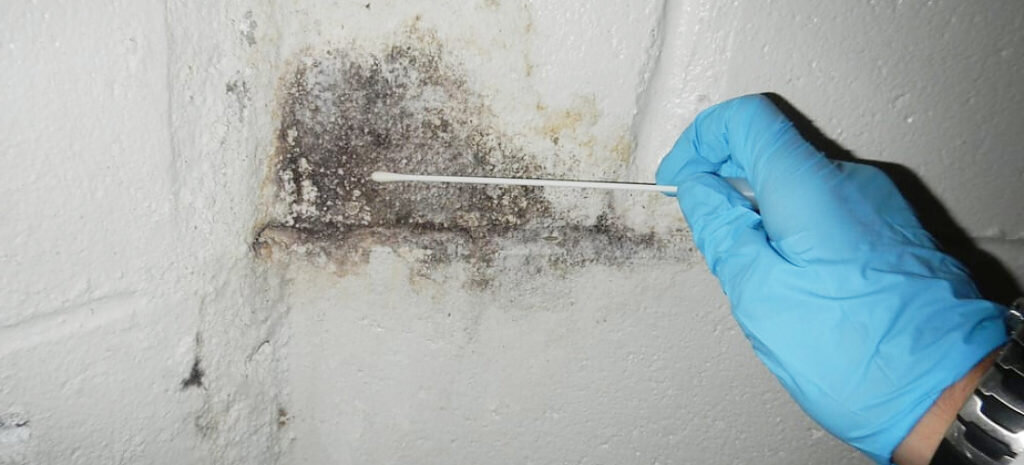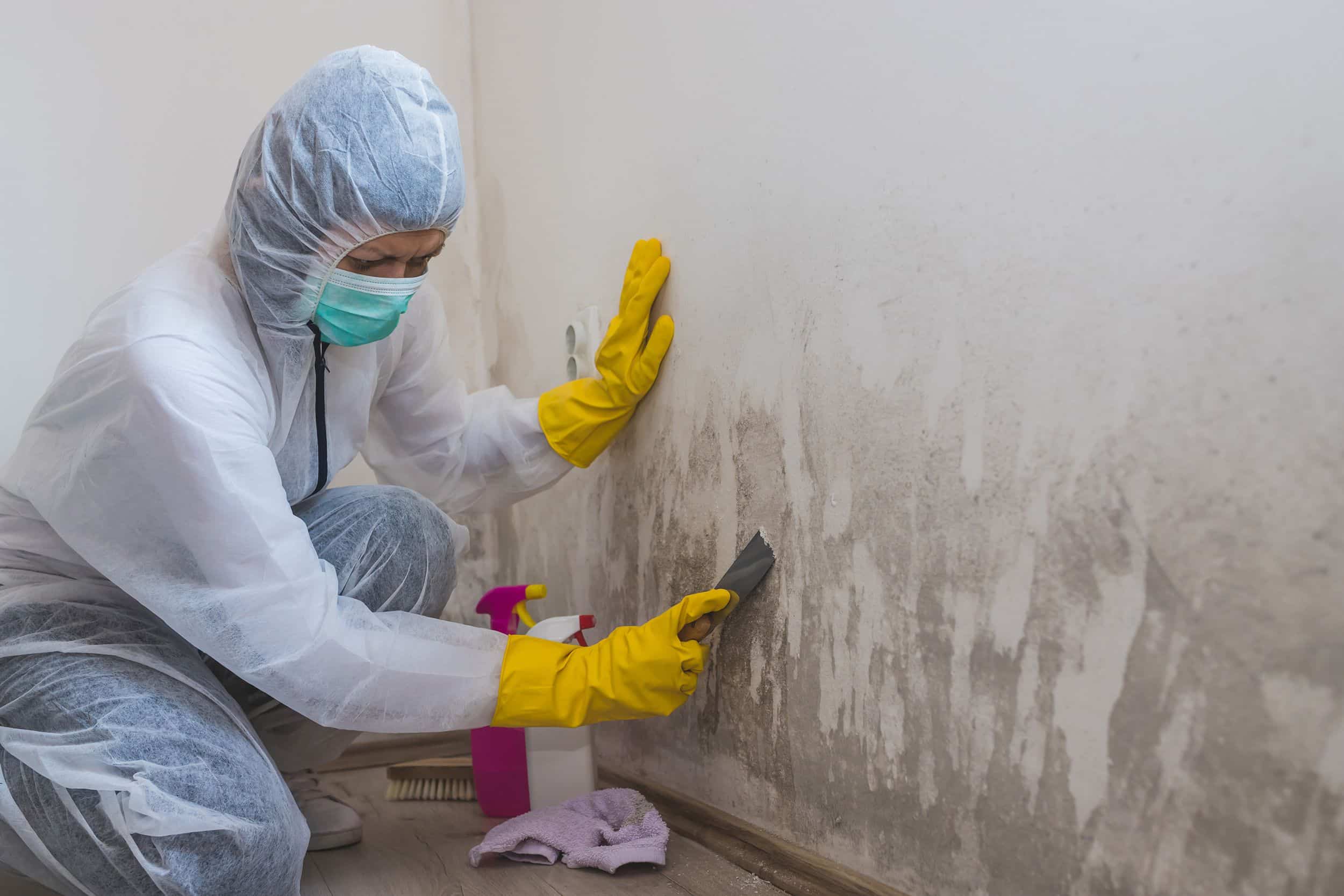Testing Air Quality After Mold Remediation
Testing Air Quality After Mold Remediation
Blog Article
Key Tips for Successful Post Mold Removal
Attending to mold concerns in a timely and effective way is important for keeping a healthy and balanced indoor environment. Effectively finishing mold and mildew removal is a diverse procedure that needs focus to detail and adherence to details protocols. From checking dealt with locations to executing dampness control procedures, each step plays a crucial duty in guaranteeing the efficiency of the remediation procedure. Nevertheless, there are essential post-remediation steps that are equally essential however usually neglected. These actions not only verify the success of the remediation initiatives however additionally add to preventing future mold and mildew development.
Assessment of Treated Areas
Upon conclusion of the mold and mildew remediation process, a detailed assessment of the dealt with areas is imperative to guarantee the performance of the removal efforts. This assessment offers as an essential step in the post-remediation phase to confirm that the mold and mildew elimination and clean-up treatments were effective in getting rid of the mold and mildew problem and recovering a secure interior atmosphere. The evaluation ought to be carried out by qualified experts who have the knowledge to assess the remediated locations meticulously.
These include aesthetic assessments to examine for any type of indicators of mold growth or water damages, moisture degrees to confirm that the area is free and dry of excess humidity that might advertise mold and mildew re-growth, and air high quality testing to make sure that the interior air is safe to breathe. In addition, the assessment might include utilizing specialized tools such as dampness meters and thermal imaging electronic cameras to spot concealed mold or dampness pockets that could lead to future mold problems if left untreated.

Dampness Control Procedures
Reliable wetness control measures are important for stopping mold and mildew development and keeping a healthy indoor atmosphere. In addition, making use of dehumidifiers in moist locations can assist minimize moisture levels, making it harder for mold to prosper.
Consistently preserving the structure and evaluating's exterior can also prevent wetness intrusion. Post remediation mold testing near me. Guaranteeing that gutters are clear, downspouts direct water far from the structure, and the roof remains in great problem can aid stop water from leaking right into the building. Correctly securing home windows and doors can likewise assist maintain dampness out
In situations where water damages happens, prompt action is required. Any type of leakages or spills should be cleansed and dried out within 24-48 hours to stop mold and mildew growth. Utilizing wetness meters can aid discover covert resources of water and ensure thorough drying. By executing these wetness control steps, the danger of mold reoccurring can be significantly minimized, developing a much healthier interior atmosphere.
Proper Ventilation Evaluation
An essential facet of ensuring a healthy and balanced indoor setting post mold and mildew remediation is carrying out a complete assessment of the air flow system. read what he said Appropriate air flow assessment plays an essential role in preventing future mold and mildew development and maintaining air top quality within the affected room.
In addition, examining the air flow system includes analyzing the distribution of air throughout the location to identify any areas of inadequate flow where dampness and impurities can collect. Proper ventilation not only assists in controlling moisture levels but likewise help in getting rid of airborne mold and mildew spores and other toxins, consequently boosting overall interior air top quality. By dealing with any type of air flow problems post mold and mildew removal, homeowner can produce a healthier and a lot more comfortable setting for passengers while decreasing the danger of mold re-infestation.
Cleaning and Disinfection Protocols
To make certain comprehensive mold and mildew removal, meticulous adherence to certain cleansing mold removal in body and sanitation procedures is imperative. Cleaning up and sanitation procedures play an important duty in the post-mold remediation phase to prevent the recurrence of mold development and ensure a secure and healthy and balanced environment.
Additionally, applying preventive actions such as using mold preventions and keeping correct ventilation can assist decrease the risk of future mold infestations. By adhering to strict cleaning and disinfection methods, residential or commercial property proprietors can make certain the successful eradication of mold and mildew and develop a healthy indoor atmosphere for residents.
Tracking and Upkeep Plan
Executing a regular tracking and maintenance strategy is essential for making certain the long-lasting performance of mold remediation efforts. Once mold and mildew remediation is finished, it is essential to develop a surveillance timetable to examine the success of the removal process.
Additionally, developing an upkeep plan is key to stopping future mold concerns. Regular upkeep not only helps in preventing mold but additionally contributes to maintaining a healthy and balanced indoor environment - After mold remediation.
Conclusion
Finally, effective blog post mold and mildew removal involves detailed examination of treated locations, execution of moisture control procedures, analysis of appropriate air flow, adherence to cleaning and disinfection protocols, and establishment of a monitoring and maintenance strategy. These crucial steps are essential to make certain that mold and mildew growth is properly removed and prevented from reoccuring in you could look here the future. By complying with these standards, building owners can keep a risk-free and healthy environment for residents.
Upon conclusion of the mold removal process, an extensive inspection of the dealt with areas is vital to make certain the performance of the removal efforts. These consist of visual assessments to examine for any signs of mold and mildew growth or water damages, moisture levels to verify that the location is completely dry and totally free of excess moisture that might advertise mold and mildew re-growth, and air top quality testing to make certain that the indoor air is safe to breathe. Furthermore, the examination may include using specialized tools such as dampness meters and thermal imaging electronic cameras to detect concealed mold or dampness pockets that can lead to future mold issues if left unchecked. By resolving any type of air flow issues post mold remediation, residential or commercial property owners can produce a healthier and a lot more comfortable atmosphere for owners while lowering the threat of mold re-infestation.

Report this page